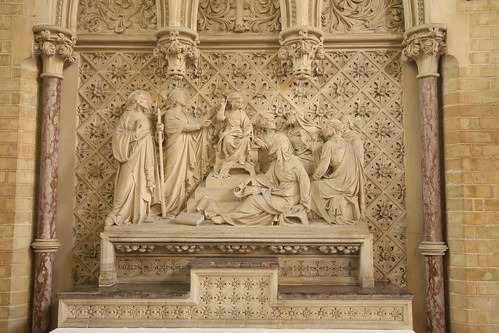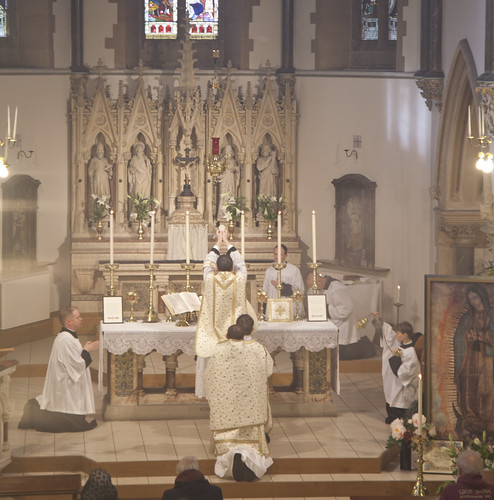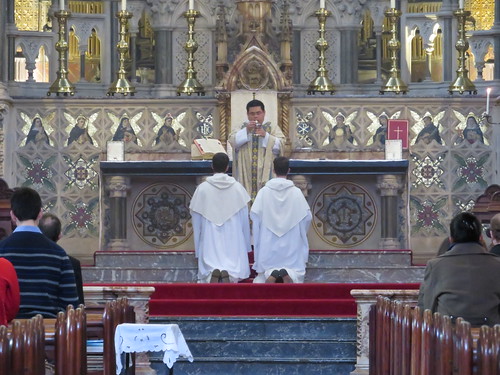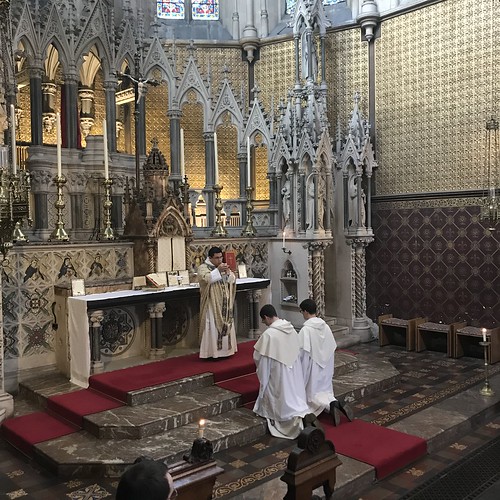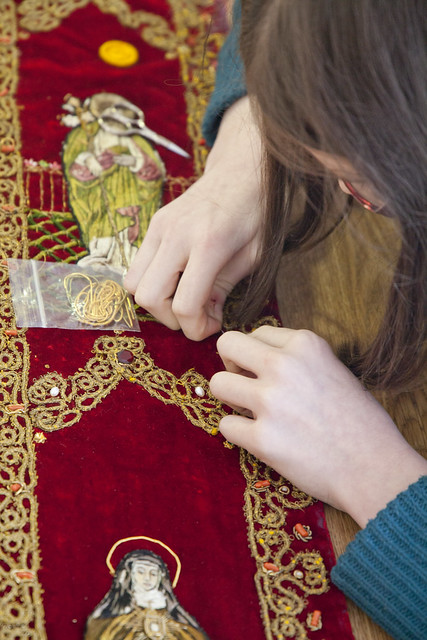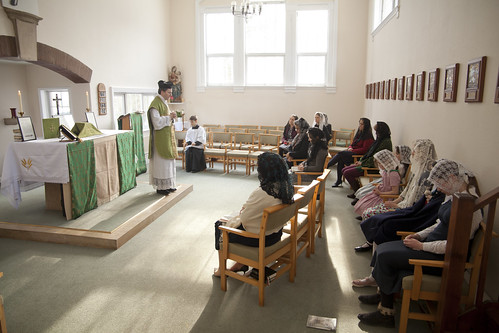 |
| Queuing for Holy Communion in Westminster Cathedral at the LMS Annual Requiem |
A lot of the acrimonious
debate about Amoris Laetitia boils
down to the question of Catholics in a state of grave sin wishing to receive
Holy Communion. Such difficulties are not new to the Church, which has long
included unjust rulers, men who have mistresses, people enjoying the fruits of
crime, and such like. Indeed, in one respect the situation was more difficult
in past centuries, because more people voluntarily excluded themselves from
receiving, to such an extent that in the High Middle Ages most lay Catholics
only received Communion once a year, on Easter Sunday.
So the question asked
today was relevant: how can the Church both exclude Catholics in grave sin from
Holy Communion, or foresee that they will exclude themselves, and still make
them feel part of the Church’s liturgical life, a lifeline to the sinner who
needs the grace of repentance?
The answer is that the
Church has found many ways of doing this, ways which are not, in general,
employed today. It is instructive to consider them.
The central point is a
simple one: in past centuries, liturgical participation at Mass was not focused
on the reception of Holy Communion.
Catholics willingly
attended Masses at which they would not receive, in order to ‘hear Mass’.
Peasants went to early Masses before starting work. Nobles would have a priest
celebrate Mass at an altar in their bedroom before breakfast. St Margaret of
Scotland attended three Masses, one after the other, each morning. The complex
ceremonial, the use of Latin and (if the Mass was sung) chant and other music,
made it a deeply spiritual experience.
What were they doing
during these Masses? They were praying. They were uniting their prayers with
those of the priest and of the Church. It was spiritual food for them.
The high point of these
Masses was the Consecration. As time went on the moment of Consecration was
surrounded with greater ceremonial (such as raising the Host for people to
see), and all kinds of architectural and musical techniques were employed to
give it greater visibility, emphasis, and dignity. There were indulgences for those
who witnessed the elevation and said a short prayer: ‘My Lord and my God’.
Those who saw Christ in the elevation felt that they had done something
important that day.
Other things took place
at a parish’s main Sunday Mass which further helped foster a sense of
inclusion.
First, Mass began with
the congregation being sprinkled with Holy Water (the ‘Asperges’).
Then, in many places the
people participated in the ‘Kiss of Peace’ by kissing a metal or wooden object,
a ‘pax’, which was passed from the priest to the server and then to each member
of the congregation. This symbolized the Peace of Christ spreading out from the
Altar, and the Consecrated Host present upon it at that point in Mass.
At the moment of the
Priest’s Communion, people made a ‘Spiritual Communion’,
a form of words summarizing their intense desire for Christ to enter their
hearts.
At the end of Mass
‘Blessed Bread’ was distributed in some regions of Europe, and sometimes
‘Absolution Wine’. These made particular sense of the practice of fasting
before attending Mass, even if one were not to receive Communion, and were sacramentals.
When Holy Communion was
received by the whole community, in the Middle Ages, on Easter Sunday, those
not receiving, whether villagers or kings, were shown up as sinners. This
happened, however, only once a year: today, we have this problem every Sunday. In
the past, when the faithful had began to receive Holy Communion more frequently,
another practice developed which stopped the Communion line being such a public
spectacle: Communion was given between
Masses, or in private. Coupled with the practice of going to Communion monthly
or fortnightly, after careful preparation, this made it impossible to tell if
your neighbor was a regular communicant.
This last practice ended
in the inter-war period. The kissing of the ‘pax’ and the customs of ‘Blessed
Bread’ and wine died out, for the most part, in the centuries after the Council
of Trent. A final idea worth noting, however, is this. Missionaries in Africa
in the 20th century faced the problem that many non-Christian men
well-disposed to Catholicism were impeded in their conversion by the fact that
they had multiple wives. One approach to the problem was to encourage them to
make a promise to be baptized before they
died. This placed them in a clearly demarcated ante-chamber of the Church,
and there could be no doubt, if one fell seriously ill, that those looking
after him could baptize him validly even if he lost consciousness.
My purpose here is not to
suggest that all these practice be revived, necessarily, but to point out that
a little pastoral imagination could address the problems all acknowledge and
which can otherwise look insuperable.
